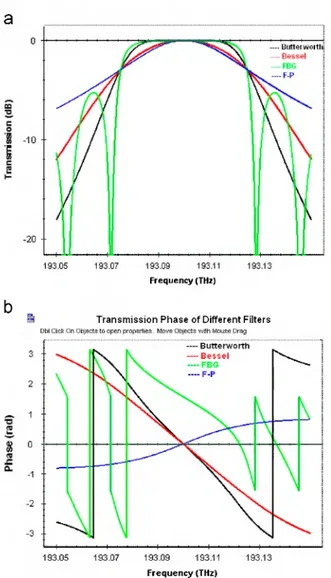Signal penalties induced by different types of optical filters in 100 Gbps PM-DQPSK based optical networks
Texto completo
Figure




Documento similar
Fundamentally, the target is to study the transport of radio signals over Ethernet signals using hybrid optical switches; in technical terms, it means to save
The Brownian dynamical analysis based on the information ex- tracted from optical forces and torques on a particle in an optical tweezer, the analysis of the fulfillment of actio
The proposed architecture consists of a RFID tag printed on a flexible substrate for the monitoring of four different gases by means of chemical sensors with optical response.. The
Independently, we tried an experimental approach to the problem of motility based on the analysis of the variations in the speckle pattern produced by a deposit of living cells.
In this chapter, a numerical model for the optical properties of nanoporous anodic alumina-based rugate filters (NAA-RF) using transfer matrix method (TMM) with the effective
We have studied the dependence of the optical contrast with the flake thickness and the illumination wavelength of few-layer antimonene flakes on SiO 2 /Si substrates produced by
Finally, by exploiting the temporal Talbot effect, DCS can be performed with two trains of optical pulses, as well as control their relative spectral phase by a fine tuning of
The method is based on the relationship between the rate of inelastic tunnelling events with energy loss hν at a bias voltage V bias and the total tunnel current at a lower bias eV

